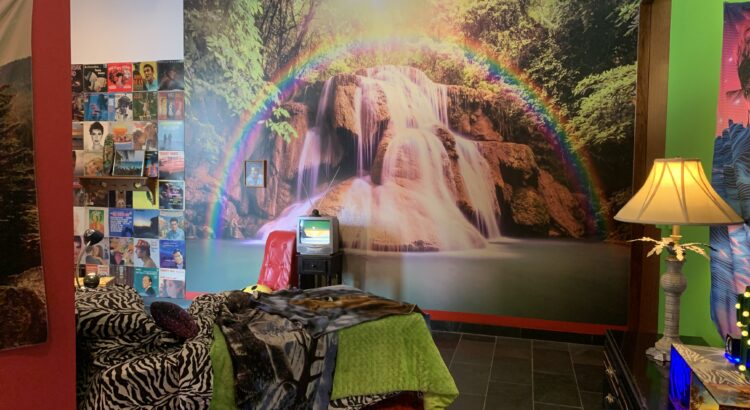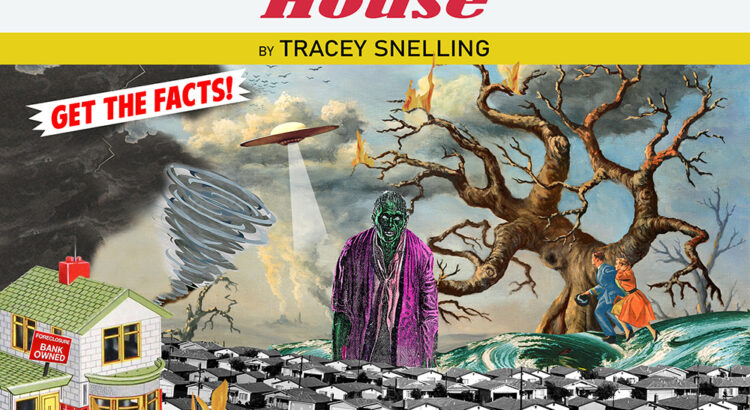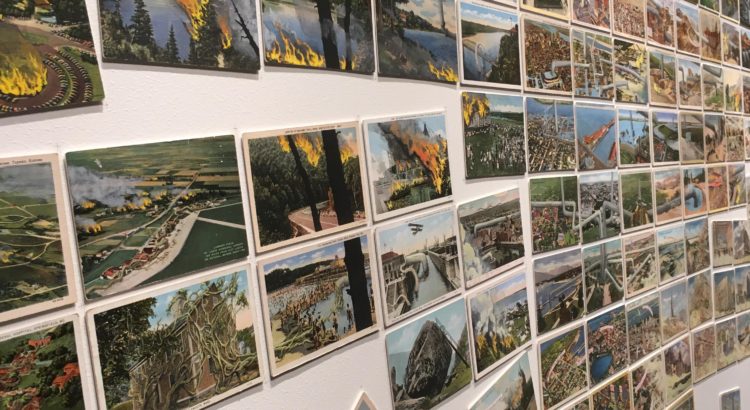“Please do not touch the art.”
In most museums, art exhibits or galleries– at least that I have attended– that message is posted loud and clear. But at Touch, an art exhibition by Ericka Lopez housed in the Institute for the Humanities Gallery, touching the art is encouraged.
Lopez was born with limited vision and today is completely blind. As a result, her art-making process comes through the sense of touch and her memories of color. The exhibit houses three different types of pieces: mixed-media sculptures, ceramics and punch-rug textiles.
I walked into the small square room with some trepidation. The exhibit is housed in the Institute for the Humanities Gallery, a square room on the first floor of Thayer Academic Building. I went during the middle of a weekday, so the gallery was understandably quiet. What drew my eye immediately were the circular mixed-media sculptures hanging on the wall. Each one looks different, and are colorful amalgamations of yarn, beads, buttons, fabric and even keys.

It felt unnatural to touch an art exhibit. I gently reached out, and realized how much the texture of the piece added to the experience. The plastic beads and bundles of string contrast each other visually, but they contrast even more in texture. These everyday objects take on a new life in these pieces.
I moved on to Lopez’s punch-rugs. Each of these pieces follow a cohesive color scheme, and with the eye look a bit plainer than the multi-media sculptures since they don’t include as many mediums as the sculptures. (Don’t worry, though; there are still plenty of beads and buttons here).

Despite being completely blind, Lopez uses color masterfully. According to Amanda Krugliak, the exhibit curator, Lopez has figured out how to distinguish different colored materials based on touch and scent. This unique method is part of what makes Lopez’s pieces so creative and imaginative; the exhibit is unlike any other that I’ve seen. It pushes the boundaries of the future of art.
I decided to try closing my eyes before touching each of these pieces– and this is how I suggest enjoying most of the exhibit, but these pieces especially. Lopez places different textiles in intentional patterns to create a landscape that comes alive as you feel it.
In the center of the room, Lopez’s ceramic pieces sit atop two tables. The deeper meaning behind these pieces escaped me at first. I stared at the beautifully glazed coil pots before scanning the QR code to read about the pieces, where I learned that the warped and lopsided shapes come from Lopez hugging or holding the pots before firing. The relationship between the body and the art, the artist and her pieces, is what makes these pieces meaningful.

Accessibility within the arts can seem tricky. How can one convey a two-dimensional painting to someone who can’t see the painting? But exhibits like this, which also include exhibit descriptions in Braille next to the pieces, show that visual art can interact with more senses than just sight. For someone like myself, who is not visually impaired, the addition of the physical texture and sensory experience of touching the pieces made the exhibit feel so much more personal. Maybe more art should be made to be touched.
Touch is open 9-5, Monday through Friday, until December 13.








 Even so, the recliner dominates the space, sending chilly tones throughout the warmly lit interior. Other striking plush components include the ‘pillow guns’, a set of three flaccid rifles mounted to the wall, and the ‘Born & Bred Beer’ beer cans casually littered on the recliner’s side-table. Chenille fabric, what the majority of the installation consists of, is immediately distinguishable through its tufted, caterpillar-like texture and iridescent appearance. These characteristics make the textile a popular choice for sofas, baby blankets, and other items that make direct contact with the skin. Needless to say, I was fascinated with the artist’s approach to materiality and her manipulation of sensory elements with chenille that served to contradict and even amplify the viewer’s psychological responses to derogatory imagery.
Even so, the recliner dominates the space, sending chilly tones throughout the warmly lit interior. Other striking plush components include the ‘pillow guns’, a set of three flaccid rifles mounted to the wall, and the ‘Born & Bred Beer’ beer cans casually littered on the recliner’s side-table. Chenille fabric, what the majority of the installation consists of, is immediately distinguishable through its tufted, caterpillar-like texture and iridescent appearance. These characteristics make the textile a popular choice for sofas, baby blankets, and other items that make direct contact with the skin. Needless to say, I was fascinated with the artist’s approach to materiality and her manipulation of sensory elements with chenille that served to contradict and even amplify the viewer’s psychological responses to derogatory imagery.












